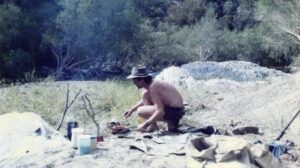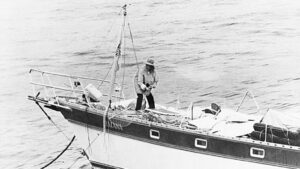Is suspended animation more fact than fiction? In the case of Swedish skier Anna Bagenholm, doctors would agree with the former. In 1999, this woman literally returned from the dead.
The ordeal
Anna Bagenholm was studying to be an orthopedic surgeon in Norway. In her spare time, she and her two colleagues blew off steam by skiing the slopes of the Kjolen Mountains. They knew these slopes better than most.
One day in May 1999, they went skiing on one of the mountains, as they had done many times before. This time, Bagenholm lost control of her skis and fell head-first onto a frozen stream. The impact shattered the ice and her head and upper body went through into the freezing, running water. Her friends tried to extricate her by her legs but couldn’t. She was stuck. Attempts to break the ice were unsuccessful.
Help took more than an hour to arrive. Bagenholm spent 80 minutes under a 20cm thick layer of ice, in frigid, fast-moving water.

Anna Bagenholm. Photo: CBS News
Bagenholm owed her miraculous survival to an air pocket. It let her breathe as the minutes ticked down until emergency services rescued her. Eventually, though, she started to freeze. She lost consciousness and her heart stopped beating.
The rescuers arrived and succeeded in breaking the ice with a large shovel. They were sure that she was dead. She was stiff and not breathing. Nevertheless, they rushed her to the nearest hospital. For the next nine hours, she battled for her life.

Rescuers try to save Bagenholm. Photo: Ketil Singstad
Bagenholm had the lowest body temperature ever recorded; 13.7°C. The average human temperature is 37°C. Doctors at the hospital worked around the clock to save her. The lead doctor, Mads Gilbert, later cited the old proverb of hypothermia that “no one is dead until they’re warm and dead”.
The doctors hooked their flatlining patient up to a cardiopulmonary bypass machine. This warmed her up, and her heart started beating again. Eventually, her temperature rose to an encouraging 36.4°C.
She spent the next several days in a minor coma before waking up, temporarily paralysed. After more than a year of physical therapy, she was finally able to walk. again. She then changed her specialization to radiology and currently works in the same hospital that housed her during that difficult time.
How did she survive?
Her extreme hypothermia is precisely what saved her. The cold slowed her metabolic rate to the point where her body and brain did not need as much oxygen to survive. It was vital that her body cooled first before her heart stopped beating. Essentially, the cold kept her in a state of suspended animation while professionals worked to get her body back on track.
There are other cases of extreme hypothermia and subsequent miraculous recoveries. A two-year-old Polish boy who sleepwalked outside his house in the winter survived a brutal body temperature of 12.7°C. In 2011, seven Danish students whose boat capsized in a freezing fiord likewise recovered after rewarming.
These cases gave the medical world insight into a technique to help those suffering from lack of blood flow. This is the ‘therapeutic hypothermia’ that doctors sometimes use during open-heart surgeries and cases of lack of oxygen to the brain. While it remains controversial, the controlled lowering of body temperature does assist in a variety of cases.





